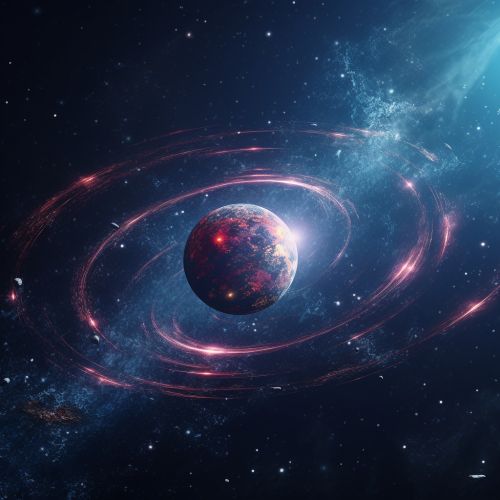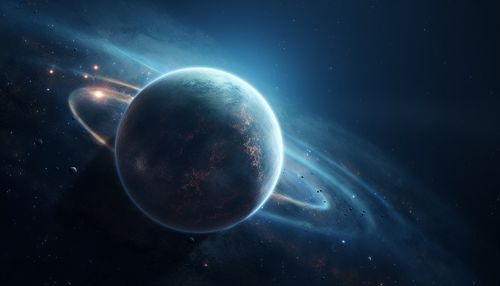Planet
Introduction
A planet is a celestial body that orbits a star or stellar remnant, is massive enough to be rounded by its own gravity, is not massive enough to cause thermonuclear fusion, and has cleared its neighbouring region of planetesimals. The term planet is ancient, with ties to history, astrology, science, mythology, and religion. Several planets in the Solar System are visible to the naked eye.


Definition
The definition of a planet has been a source of controversy within the scientific community. The current definition, as stated by the International Astronomical Union (IAU), defines a planet as a celestial body that orbits the sun, has sufficient mass for its self-gravity to overcome rigid body forces so that it assumes a hydrostatic equilibrium (nearly round) shape, and has cleared the neighbourhood around its orbit. However, this definition has been criticized for excluding celestial bodies such as Pluto and Eris, which are considered dwarf planets.
Formation and Evolution
Planets are believed to form through a process known as planetary accretion. This involves the aggregation of particles into a massive object by gravitationally attracting more matter, eventually building up into a planet. The process of planetary formation is part of a larger process known as stellar evolution, which describes the life cycle of a star and its planetary system.
Over time, planets undergo various changes due to internal and external processes. These changes can include shifts in the planet's orbit, alterations in its physical characteristics, and even its destruction. The study of these processes and their effects on planets is known as planetary evolution.
Classification
Planets can be classified in various ways, including by their physical characteristics, their orbit, and their potential for life. In our Solar System, planets are traditionally divided into two types: terrestrial planets and gas giants. Terrestrial planets, which include Mercury, Venus, Earth, and Mars, are characterized by their solid, rocky surfaces. Gas giants, which include Jupiter and Saturn, are characterized by their gaseous atmospheres and lack of a solid surface.
In addition to these traditional classifications, astronomers have also discovered a wide variety of exoplanets, or planets outside our Solar System. These exoplanets can vary greatly in their characteristics and are often classified by their mass, radius, temperature, and other factors.
Exploration
The exploration of planets has been a major focus of space exploration. This has been achieved through both manned and unmanned missions. The first successful planetary exploration mission was the Mariner 2 mission to Venus in 1962. Since then, numerous missions have been launched to explore the various planets in our Solar System.
In addition to direct exploration, astronomers also study planets using telescopes and other observational tools. These methods allow scientists to study planets both within and outside our Solar System, providing valuable information about their composition, atmospheres, and potential for life.
